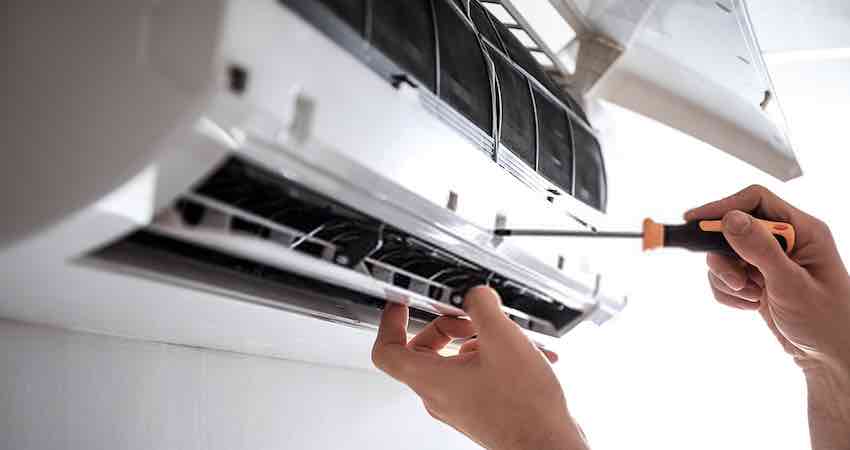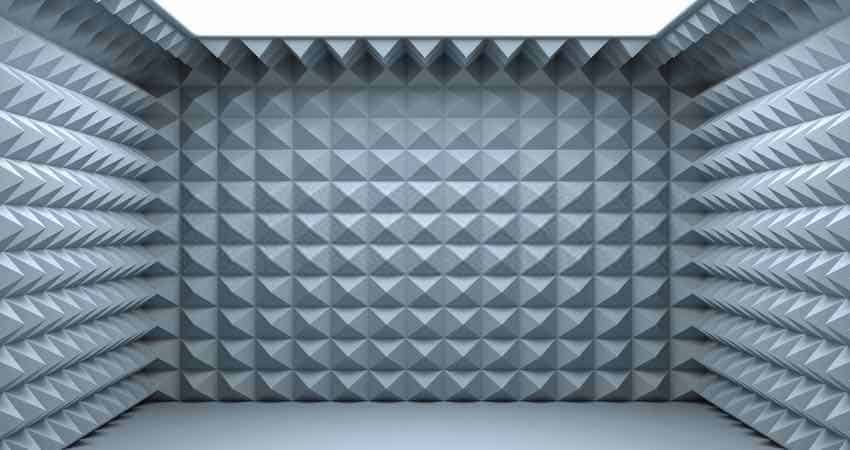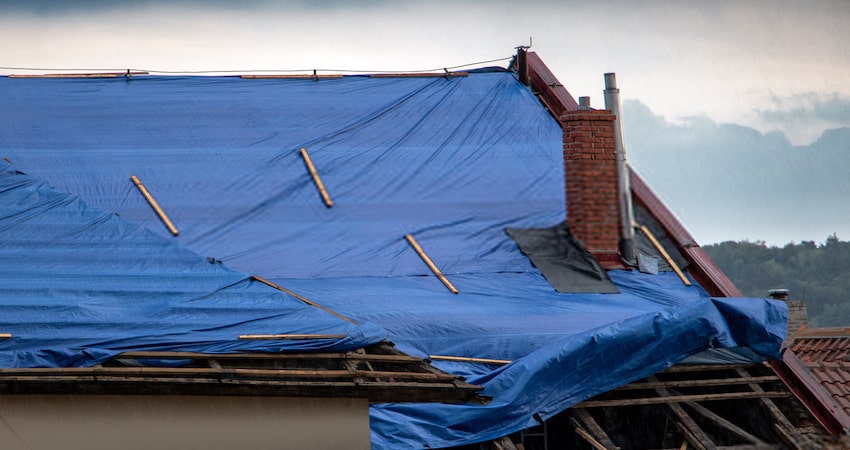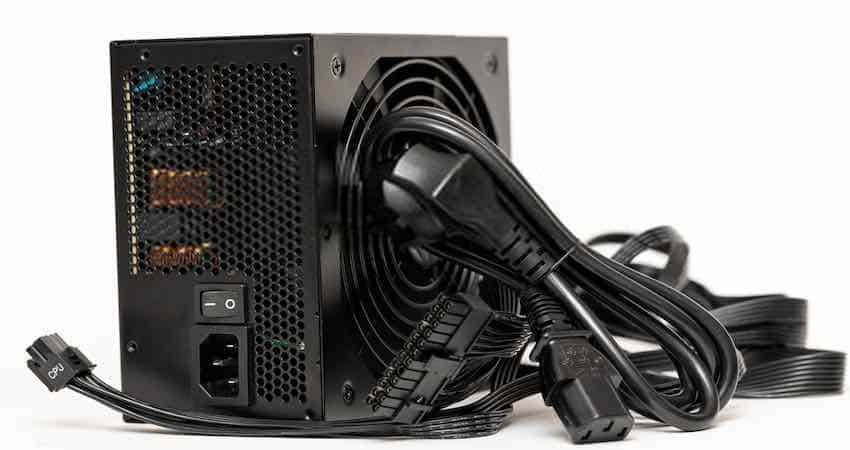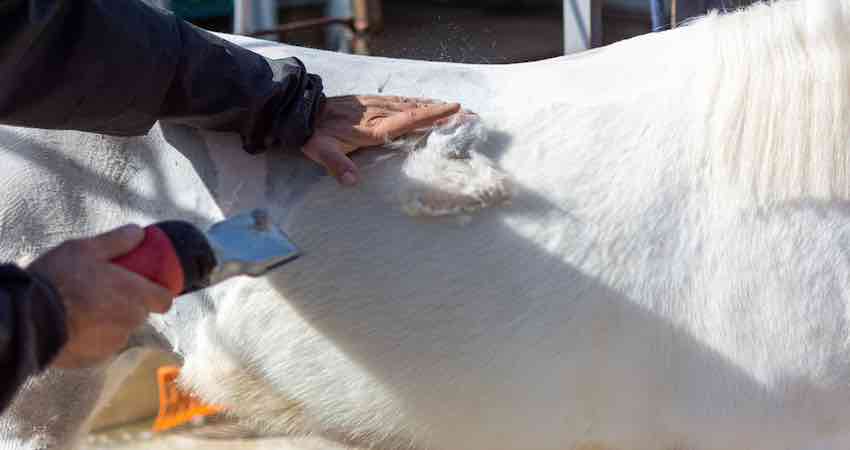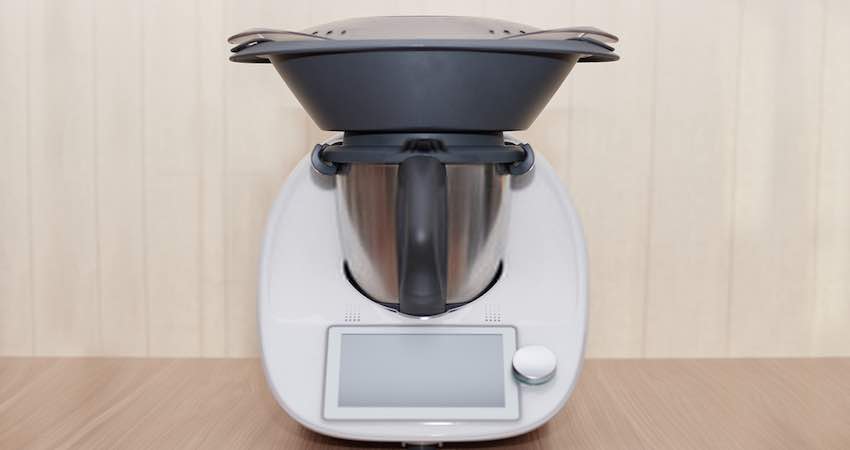As an Amazon Associate, we earn from qualifying purchases at no extra cost to you.
Whether it’s a noisy generator or furnace, the first place we think of installing them is in the basement. This is because at the basement they will cause little disturbance than any other place in the house. The noise coming from your basement can be too much for you to handle.
Sometimes, the basement can be your office or a spare bedroom. At this point, you will want to reduce all the noise coming from other rooms to the basement.
Therefore, in this article, we will discuss 7 cheapest ways to soundproof a basement ceiling. Whether you want to eliminate noise from coming in or going out of the basement, these techniques will help you.
- Why Soundproofing Basement Ceiling is Important
- Best Techniques to Soundproof The Basement Ceiling
- 1. Soundproof All Noise Appliances in the Basement Before It Reaches the Ceiling
- 2. Seal the Ceiling Cracks
- 3. Install Acoustic Insulation Between the Cavity Joints of Your Wooden Ceiling
- 4. Pin the Blankets to Your Ceiling
- 5. Add Another Layer of Dry Wall with Soundproofing Glue
- 6. Install Acoustical Tiles and Drop ceiling
- 7. Install Acoustic Foam Mats on the Ceiling
- Can I Combine Different Soundproofing Techniques in Your Basement?
- Additional Technique to Soundproof Your Basement
Why Soundproofing Basement Ceiling is Important
Soundproofing the basement is easier than all the other areas in the house. With the basement, you only need to soundproof the ceiling.
In most cases, the basement will have only one window. Most of the basements do not have windows at all. The window can easily be removed or covered if its leaking noise outside. It’s not that important to have it in the basement.
All the noises in the basement are likely to escape through the ceiling. If the ceiling is not soundproofed, the rooms above it will experience all basement sounds.
Since the basement is located below other rooms, it’s very important to soundproof the ceiling. This is the best thing you will do to reduce noise coming from the basement.
In most cases, you only stop the sound from causing a disturbance in other rooms — no one cares about the noise that is entering the basement. Unless there is someone living in the basement. Most of the noises from the basement travel through the ceiling.
Best Techniques to Soundproof The Basement Ceiling
There are different techniques that you can use to soundproof the basement ceiling. For effectiveness, you will need to combine more than one technique. The following are the common techniques that will eliminate noise from your basement.

Adding Mass
Adding mass to your ceiling is the easiest thing to do. The aim of adding mass is to thicken the ceiling surface. Thick surfaces do not vibrate. As a result, sound does not travel through them easily. Adding mass would include pinning extra wood or installing more concrete materials on the ceiling.
Mechanical Isolation or Decoupling
Mechanical isolation is the technique of introducing air between two objects that transfers sound. The technique involves using double studded walls, resilient channels, sound clips, and staggered studs.
Absorption Technique
Absorption technique involves using soft materials that absorb sound. Absorption material converts the sound to heat energy.
Ideally, you need to eliminate, cancel, destroy, or remove all noise in the basement. Therefore, in your basement, the absorption technique works perfectly. It cannot soundproof 100% of the noise, but it will eliminate most of the noise.
Sound Dampening Technique
In sound dampening, you deal with sound before it travels to other places. You put a blocking material to the path of the sound. It’s reducing or changing the frequency of the sound.
Sound dampening materials block the sound and reduce the vibration. As the vibration reduces, the sound is dampened and cannot travel further.
7 Cheapest Ways to Soundproof a Basement Ceiling
1. Soundproof All Noise Appliances in the Basement Before It Reaches the Ceiling
Before you would think of soundproofing your ceiling, the first thing you need to do is remove all structural noise in your basement. Vibration sound penetrates through the wall.[asa2_img img=”2″ size=”LargeImage” width=”300″ height=”300″ align=”right” show_title=”no” show_button=”no”]B01LYMZYOO[/asa2_img]
Use Anti-vibration Pads
Anti-vibration pads are the most effective way to reduce structural noise. It’s cheap and easy to install. They absorb all the vibrations and prevents them from causing disturbances in the other rooms.
The best part is that you don’t need any special skills to fix the pads. You can do that in less than 5 minutes. Order the pads on Amazon and put them under the washer or dryer.
Depending on your appliance, you will cut the noise by more than 30%.
Washer Dryer Shock Absorbing Pads
[asa2 tpl=”Flat_box_horizontal”]B01LYMZYOO[/asa2]- Pack of 4 Universal Anti-Walk Pads
- Excellent Shock Absorber
- Non-Skid Design
- sturdy and durable
- Made of recycled tire rubber
- Effective Anti-Vibration platform
Place a Heavy Rug or Blanket Under Noisy Appliances
Soundproofing blankets are perfect for absorbing excess sound from vibrating appliance. For that reason, buy a soundproofing blanket and lay it beneath your appliances.
When covering your appliance, you don’t need to cover it completely. To control the noise from the appliances, apply the following tricks.
- Lay a blanket on the floor.
- Place the appliance at the center of the blanket.
- Tape the free blanket to the sides of the machine.
Above all, ensure you buy the right blanket.
A blanket or a heavy rug function well. You can use either. However, ensure you clean and dry the blanket regularly. This will prevent bad odors from developing in your basement.
2. Seal the Ceiling Cracks
Every ceiling will eventually develop gaps or cracks. Basement ceiling is more prone to this problem. The ceiling cracks becomes an issue because they allow noise and air to pass through them.
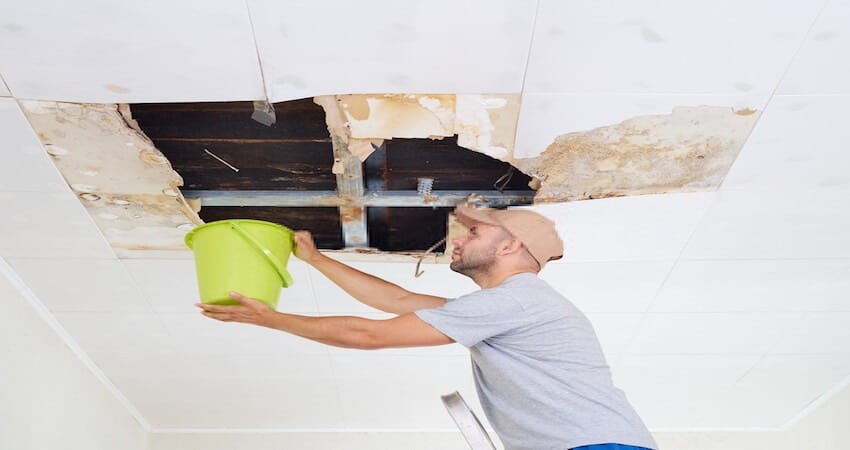
Therefore, inspect your basement ceiling. Check any cracks. Sometimes you might not see big cracks. It’s important to be keen when inspecting your ceiling. Even small cracks will need to the . If not sealed they will develop to big cracks. Also, the small cracks allow air and sound to pass through them.
For a proper inspection, rub the ceiling surface. Clean all dust and check any cracks that you might have missed.
After finding the crack repair them if they are huge. For small cracks seal them with patch seal. The seal is available on Amazon.
Quikrete Concrete Crack Seal Natural 1 Qt
[asa2 tpl=”Flat_box_horizontal”]B000FCCZFQ[/asa2]- It is easy to use
- It is highly durable
The seal kit comes with all tools you will need to seal the gaps. It comes with spackle, putty knife, sanding pad, and primer. After using it on your ceiling, the cracks won’t be seen after you paint.
3. Install Acoustic Insulation Between the Cavity Joints of Your Wooden Ceiling
If your basement ceiling is wooden, you won’t be able to seal the cracks like drywall. Wooden ceilings are light and allow sound to pass through them easily. When someone walks in the room above the basement, you can easily hear them. The noise in the basement is also heard on the other places as well.
To reduce this noise, work on your cavity joints. Hollow ceiling cavities reverberate and echoes when sound hits on them. In fact, it magnifies the noise from the basement.
Therefore, add a soft porous material between the woods. Insulation materials with air pockets can dampen all the sound, leaving or entering into the basement.
Alternatively, you can fix fiberglass insulation. It will also reduce the high amount of noise. Though, the acoustic insulation pads will reduce the sound better than fiberglass.
4. Pin the Blankets to Your Ceiling
Attach blankets to your ceiling. For maximum experience, pin a thick blanket. If you have control over the room above you, put a thick rug on its floor. This will absorb a lot of sound impact from the room.
Attach the blankets on the ceiling using nails. However, don’t use thin nails. Blankets can easily slide off from the ceiling if you use thin nails. Use a nail with a “fat head” to help the blanket remain secure.
If you stay in a rented house, you are limited in many ways. You cannot make any adjustments to the basement ceiling. Also, you cannot take a big soundproofing project. Therefore, with all these challenges, blankets become a perfect choice to eliminate all the noise in your room.
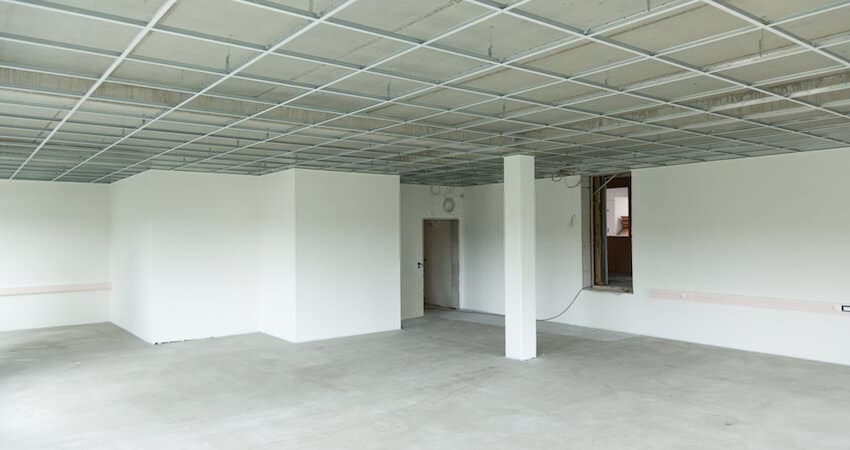
Most blankets can be used in soundproofing, but not all will give good results.
Thicker blankets muffle airborne sounds and vibrations. When you think of soundproofing, you should look for blankets made of the following materials.
- Cotton
- Multilayered polyester
- Mineral wool
The best soundproofing blankets are moving blankets. They are designed for protecting furniture and appliances from damages when transported.
Moving blankets are suitable for soundproofing because they are dense. They easily dampen any sound vibrations. To learn more about room soundproofing with blankets check this article.
Check the following blankets on Amazon.
Sure-Max 12 Moving & Packing Blankets
[asa2 tpl=”Flat_box_horizontal”]B01GK6JTFE[/asa2]- Deluxe Pro
- Double-sided construction
- 80″ x 72″ (40 lb/dz Weight)
- Professional Quilted Shipping Furniture Pads Royal Blue
- Effective sound absorption.
- Measures 95″ x 54.
- Great for recording studios, drum rooms, rehearsal spaces, vocal booths, and more
- Installation hardware included
- Deluxe Moving Blankets by Chean Cheap Moving Boxes
- Size: 72″ X 80″
- Double lock stitching and thick 1/4-inch material
- Ideal for preventing scratches and nicks to furniture
- Double lock stitching with four square finished corners
5. Add Another Layer of Dry Wall with Soundproofing Glue
The thicker the solid surface, the lower the sound penetration. Therefore, add another drywall layer to your ceiling. Double the ceiling thickness.
Before you add the drywall, apply the green glue on the ceiling. Green glue is an acoustic compound that will hold together the additional drywall. The glue is designed for other soundproofing projects. It is commonly used as a sealant.[asa2_img img=”1″ size=”LargeImage” width=”500″ height=”375″ align=”right” show_title=”no” show_button=”no”]B000SKWD8Y[/asa2_img]
On your ceiling, apply to the corners. Add another glue between sound dampening compounds or drywall sheets. Even a thin layer of green glue will work perfectly with ordinary drywall.
Doubling your ceiling thickness will reduce the ceiling vibrations. Sound will be dampened before it causes disturbance to other rooms.
Using soundproofing adhesive between the two drywalls removes the air between them. Once the green glue dries, it dampens and absorbs all the sound passing through them. This makes it difficult for sound to travel through them.
You might like: Comparison between Green Glue vs QuietRock
6. Install Acoustical Tiles and Drop ceiling
Drop ceilings are also known as suspended ceilings. Although the technique does not give your basement an appealing look, it works well in eliminating noise.
Start by filling the ceiling cavities. Fix the acoustic tiles in a hanging manner. Acoustical tiles are a porous material that dampens the sound by trapping it in its voids. After fixing the tiles, insulate them with a fiberglass backing.
7. Install Acoustic Foam Mats on the Ceiling
The foam mats work as insulators. There is no need for construction when using them. The mats contain rubber foam and are resistant to water, oil, and petrol. They do not allow any air or noise to pass through them.
Unlike blankets, the foams do not absorb moisture or release odors. They are adhesive and easy to stick on the wall.
Acoustic foam panels are specifically designed for music rooms. They can also function well on the basement walls. Acoustic foam panels absorb all noise that bounces off the wall. They soften all the echoes produced from your basement. Acoustic foams are also very useful to reduce bass noises.
We have tried and tested the following acoustic foams. They work perfectly on our basement ceiling.
Check our tested foams on Amazon.
Foamily 12 Pack- Acoustic Panels
[asa2 tpl=”Flat_box_horizontal”]B010GPFRUQ[/asa2]- 12 Pack covers 12 square feet
- Professional acoustic control
- Great for spot treating sound on walls
Mybecca 12 Pack- Acoustic Panels
[asa2 tpl=”Flat_box_horizontal”]B00TP7C9YY[/asa2]- 12 pack means
- Professional acoustic control Acoustic
- Sound deadening material
Factors to Consider When Choosing Laundry Soundproofing Techniques For Your Ceiling
Soundproofing materials for basement ceiling range from soundproofing glue, anti-vibration pads, curtains, rags, to blankets. Consider the following factors to choose the best way that will work with your basement.
Where to Soundproof
This is the critical factor you need to consider. Understand where you want to soundproof. Materials needed to soundproof doors are not the same as the materials required to overlay under machines.
First, understand the exact place you want to soundproof. Buy specific materials that will give maximum performance on the area.
The Nature of Sound to Soundproof
Vibration and normal sound require different soundproofing techniques. Some material will work well with vibration noise while other techniques will not work at all. Therefore, it’s important to understand the nature of the sound you want to eliminate from your basement.
The Level of Noise
Is it low or high-frequency noise? Different level of noise requires different techniques for effectiveness. The level of noise will determine the material and budget requirement of your soundproofing project.
Budget
Different materials cost differently. Settle on materials that you can afford to buy and maintain. When comparing the cost of materials, consider the long-term cost. Don’t just check at a price only. Factor in the maintenance cost of the technique if there is any.
Material Performance
Heavy rags and blankets perform better than lighter ones. Choose materials that would eliminate most of the noise from the basement. When soundproofing with blankets, buy moving blankets on Amazon. Depending on the level of your noise also pick a material that will eliminate it perfectly. The more weight and thickness of the material, the better the performance.
Can I Combine Different Soundproofing Techniques in Your Basement?
The answer is yes. Combine more than one technique for effectiveness. Start by eliminating the noise from its source. Then apply other techniques like pinning blankets or foams on your wall.
Using different noise reduction techniques gives maximum performance. If one technique eliminates 30% of the noise and the other one 40% at the end you will have removed 70% of the total noise in your basement.
Additional Technique to Soundproof Your Basement
Apart from soundproofing the ceiling, you might need to soundproof other parts in your basement. The following are additional ways you can soundproof other areas in your basement.
Basement Walls: Soundproofing basement walls is almost similar to soundproofing the ceiling. You can pin blankets, hang soundproofing curtains, install acoustic foams, and fix all cracks on the wall.
Basement Door: Fill all spaces in your door with soundproofing adhesive tapes. If the door is hollow change or thicken it. Put door sweeps to cover the space between the door and the floor.
Basement Window: Hang soundproofing blankets and curtains over the windows. Seal all other spaces that can allow air and sound to pass through them.
Basement Floor: Lay down heavy mats and rugs. They will absorb all the noise coming from your basement.
Parting Shot
Most of the techniques we have discussed are simple to apply. You don’t need prior experience to use them in your basement ceiling. However, some techniques, like adding drywall would require a skilled professional to do it for you. Therefore, check the factors that will determine your soundproofing technique. And according to your needs, choose the best way to soundproof your basement.



